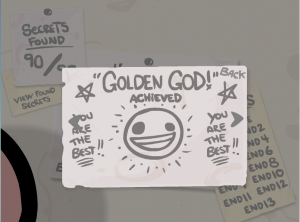On our podcast with Ernest Adams, we got on the subject of game design and I asked him what makes a good game. His answer was very interesting as he explained it by using the word harmony– or how all the elements of the game work in sync with each other.
Thinking about it more, I found the term fascinating and a great springboard for talking about game design.
Bringing it all Together:
Whenever we examine game design for whether or not a game is good or bad, there are multiple elements to look at — Gameplay, controls, balance, art design and so on. And whenever we call out games for not being good, it’s always when elements conflict with one another.
Maybe the game mechanics don’t gel well or the art doesn’t match what the game is trying to represent and etc. But the point is that not every part of the game harmonizes with one another. And when we talk about game elements in this fashion, it becomes a much deeper analysis than just saying whether or not something is fun.
When we talk about some of our favorite titles across multiple genres and platforms, the ones we rate the highest are where all the elements work. The Mario series for instance features a focus on gameplay with great controls, level design and an art style that isn’t realistic but fits the tone of the world. The only thing I would say is off about the series is a lack of a grand story but that’s not the focus that Nintendo was aiming for.
And this is also why Blizzard has had winner after winner with their titles. Each one is greater than the sum of its parts and you can tell that the game was designed with complimenting viewpoints.
“Complimenting viewpoints” is an important term as part of a game harmonizing is its team working in harmony as well. Great games are rarely designed by a group of people who barely interact with each other where each part of the game felt like it was stitched together from unrelated elements.
The more conflicting parts you see in a game or the less harmony causes elements to start clashing with each other and affect the perception of the title.
Falling Apart:
As we can use harmonizing game design to describe great titles, we can also use it to look at games where the elements don’t work.
This can explain why so many people aren’t fans of F2P design as many F2P games feature the microtransactions tacked on as a way of limiting gameplay and forcing purchases as opposed to being implemented well. And as always a great comparison would be comparing something like Marvel Puzzle Quest to a game like Card Hunter or League of Legends and how having the wrong kind of microtransactions can hurt a game.
Keeping with the theme of harmony, we can say that when elements don’t work and pull us out of the experience, it’s like when a record skips in the middle of a song — It’s noticeable, hurts the mood and sticks with you.
And this is also why games that are built around multiple genres are some of the hardest to do right. Games like Borderlands, Fallout 3 and Skyrim each attempted to combine RPG design and abstraction, with real time combat and player control. For me, I enjoyed Borderlands but didn’t like Fallout 3 or Skyrim as I wanted my skill to have more of a factor as opposed to the abstraction.
Recently Transistor would be another example as it tried to do both real time and turn based which worked for some people, but left others like myself fighting the game to play it.
When we use the concept of harmonizing game design , we can use it to dispel one of the worse words to use when examining video games.
The F Word:
It’s an unspoken rule among people who critically examine video games to not use the word “fun” to describe why a game is good or bad. The reason is that fun is subjective and it doesn’t add to the discussion in any meaningful way. And many times in the past, even I had trouble describing why a game was good other than saying it was fun. This is why using the concept of harmony is an interesting alternative as it allows you to connect mechanics, art, story etc together and leads to a stronger examination in the process.
So the next time you’re trying to look at a game, think in terms of the package as a whole and see if everything works well together or clashes.




